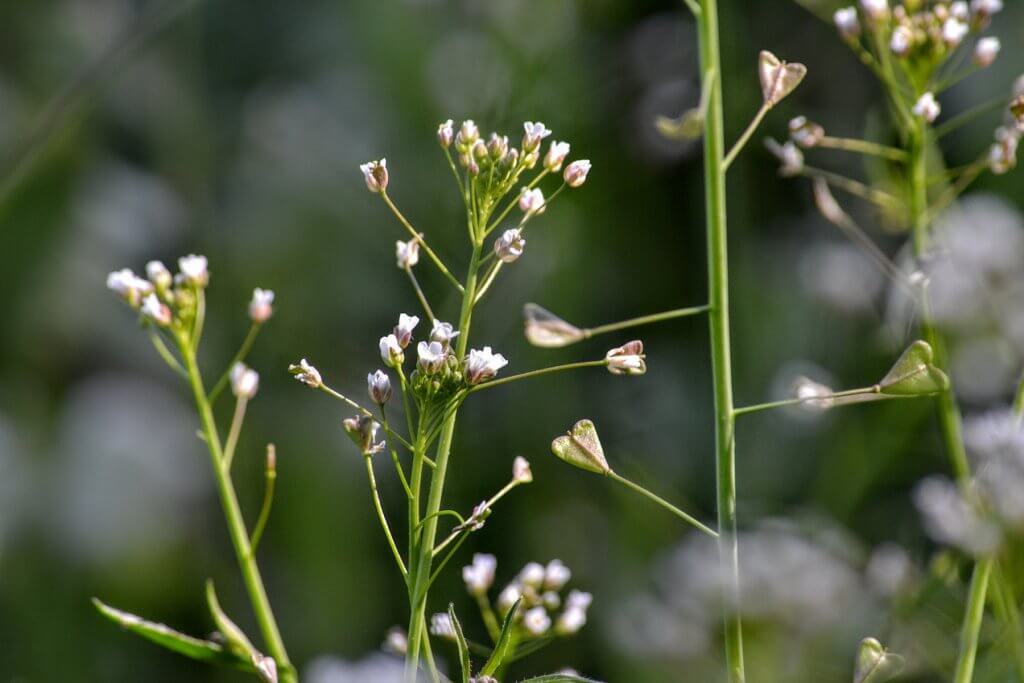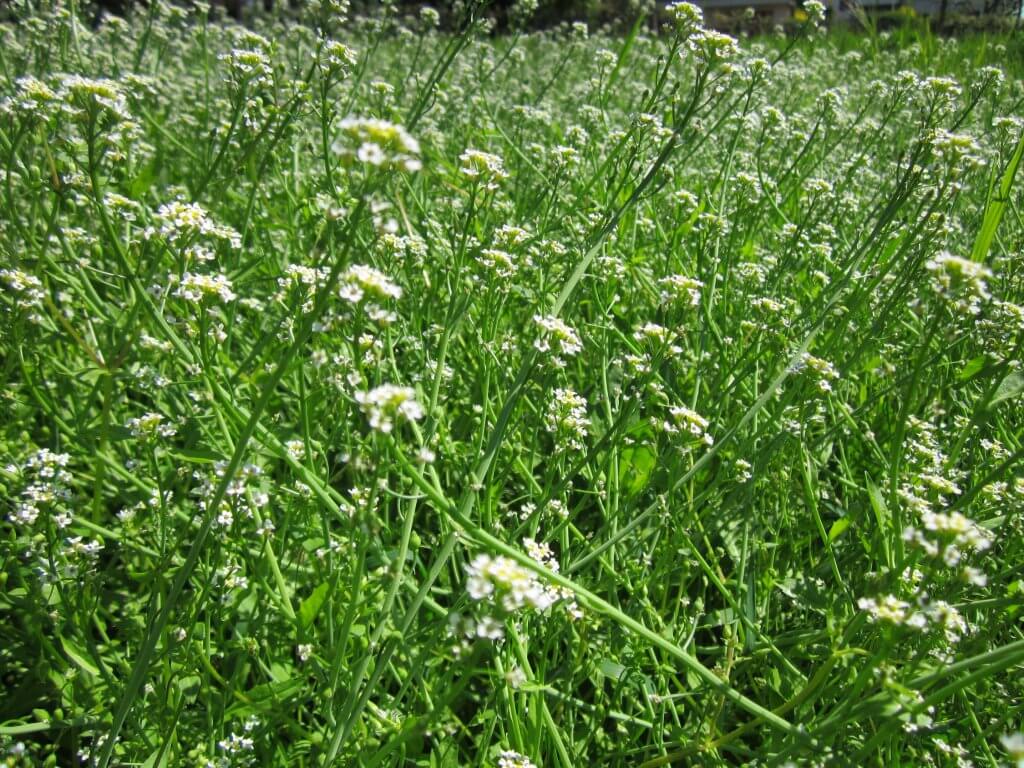Shepherd’s purse (Capsella bursa-pastoris) is a member of the mustard family, Brassicaceae. Its name has been influenced by the shape of the small edible seedpods, which resemble old coin holders used by medieval shepherds.
They are native to eastern Europe, particularly Turkey, and also large parts of western Asia. Due to their popularity as a medicinal and culinary herb, they have now become largely naturalised throughout the world. They are even considered a weed within many areas, particularly those with a cooler climate. You’ll typically find them growing in recently disturbed soil, from farmed fields to roadsides. However you’ll often find them growing in wild meadows and woodland edges too.

It is is an annual herb, growing to a maximum height of 50cm. The base of the plant is fairly similar to a dandelion, with a rosette of pinnate leaf stalks emerging from the center. As spring begins to set in, a flower stalk emerges bearing tiny white flowers similar in shape to the flowers of wild mustard. Along this stem, small seedpods, 1cm in length and 0.5cm in width, appear on tiny stalks. These are the triangular shaped pods that give shepherd’s purse its name.
Edible parts and other uses
The young leaves, flowering shoots and seedpods of Shepherd’s purse are all edible. Containing a high amount of nutrients, especially vitamins A, B2 and C, shepherds purse is a great herb to use within the kitchen. It has a mild peppery taste, so the young leaves work well within salads or as a leafy side dish. The seedpods when picked fresh can be added straight into a salad to add a mild peppery crunch. However you can also dry them and use them as a substitute for pepper.
It is commercially cultivated within parts of Asia, including China and Japan. Where the leaves and seed pods are often used within a stir fry or used as a dumpling filling.

The plant was widely used throughout Europe as a medical herb. It was believed to aid in treating cardiovascular issues, as well as headaches and bladder infections.
The seedpods when placed in water are also believed to release anti-mosquito compounds. Studies have shown that mosquitos and also the larvae can be attracted to and then killed by these compounds.
Cautions
As this plant grows prolifically in urban areas and wastelands, care should be taken when foraging. As it is treated as a weed, any urban populations of shepherd’s purse may have been treated with a herbicide. So make sure to only forage for plants in wild areas, or your own back yard.
It is also recommended that pregnant or breast feeding women should avoid consuming shepherds purse. It has been linked to causing contractions of the uterus, so must be avoiding at the risk of causing miscarriage.
Foraging
The tiny white flowers that appear in spring, and the small triangular seedpods will help you to identify shepherd’s purse. However the plant can be foraged throughout the year, including winter when the flowers and pods are not visible. In this instance the rosette of leaves is the best indicator, the only similar lookalike being dandelion leaves which are also edible!
The young leaves can have a better flavoring if picked before the plant flowers, but they still have a fantastic mild, peppery taste all year round.

Did you know…
During the 17th and 18th century, as early colonisers began arriving in the US. Shepherd’s purse was frequently used as a substitute for pepper, to give foods a seasoned taste.
Conclusion
A tasty wild edible that should be found in abundance in your local area. It can be a great addition to a foraged, wild food salad or accompaniment to soups and sauces. As a member of the mustard family, it has a delicious light, peppery taste that works well in many recipes.
—————Written by Hannah Sweet
Hannah is a freelance writer and graphic designer from the UK. With a penchant for travelling, photography and all things botanical, she enjoys writing about a wealth of topics and issues, from conservation and slow living, to design and travel. Learn more about her writing and design services at www.sweetmeanders.co
Many of our readers find that subscribing to Eat The Planet is the best way to make sure they don't miss any of our valuable information about wild edibles.
See our privacy policy for more information about ads on this site






